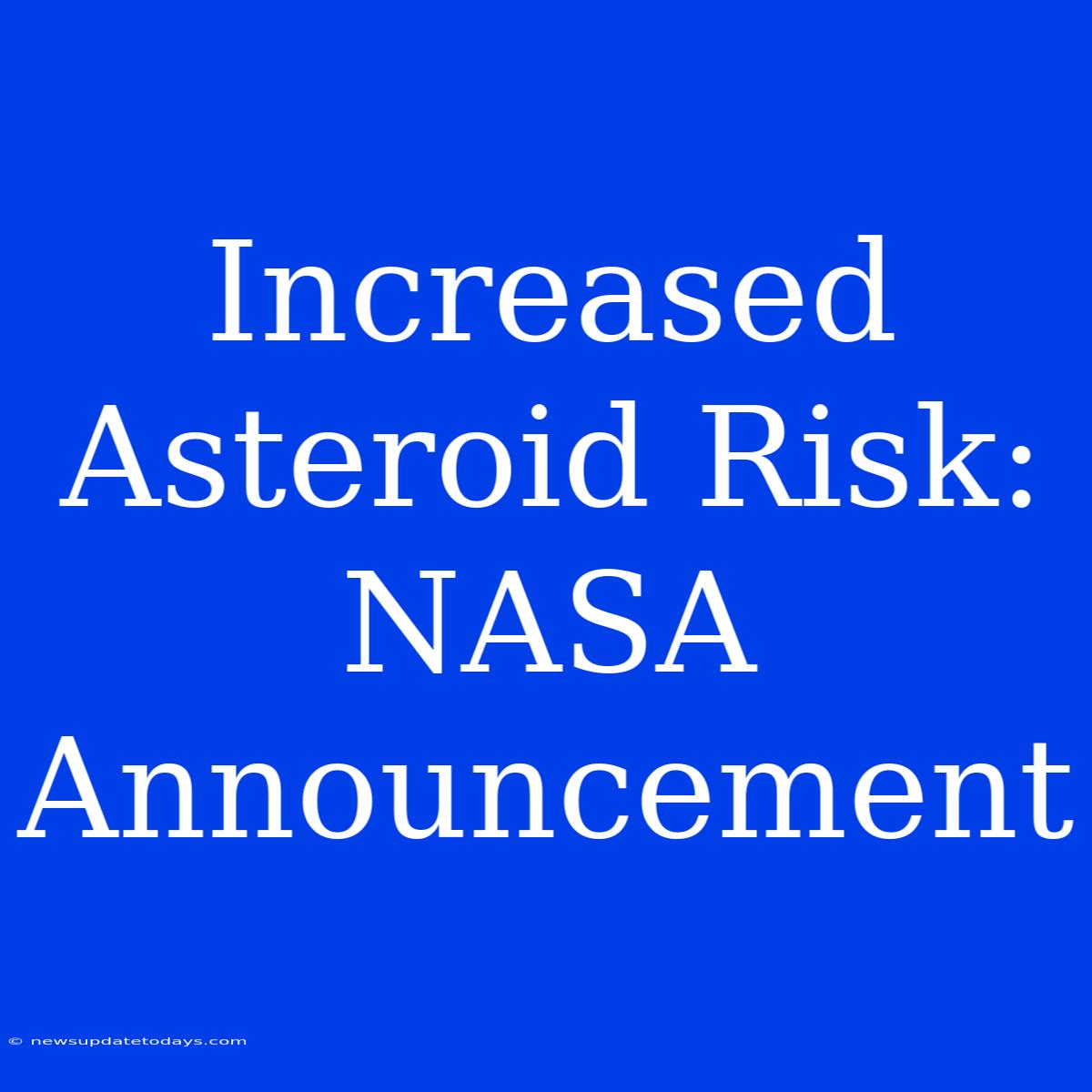Increased Asteroid Risk: NASA's Latest Announcement & What It Means
NASA's recent announcement regarding an increased risk of asteroid impact has understandably sparked concern. While the probability remains relatively low, the potential consequences are significant enough to warrant attention and further investigation. This article delves into the specifics of NASA's announcement, exploring the potential risks, the agency's response, and what we can expect in the future.
Understanding the Increased Risk:
NASA's announcement doesn't signify a sudden, imminent threat. Instead, it reflects a refinement in our understanding of asteroid trajectories and the inherent uncertainties involved in predicting their paths decades into the future. Improved tracking technology and refined computational models allow for more precise, albeit sometimes unsettling, estimations of impact probabilities. The increased risk, therefore, is largely a reflection of improved scientific understanding, not necessarily a jump in the actual threat level.
Key Factors Contributing to the Revised Assessment:
- Improved Detection and Tracking: Advances in telescope technology and data analysis have enabled us to identify and track a far greater number of near-Earth objects (NEOs) than ever before. This increase in data leads to a more accurate, and sometimes higher, assessment of potential risks.
- Refined Orbital Calculations: Predicting the trajectory of an asteroid far into the future is incredibly complex, involving a multitude of gravitational forces and other factors. Even slight uncertainties in initial measurements can lead to significant variations in predicted impact probabilities over time.
- Yarkovsky Effect: This subtle effect, caused by the uneven heating and cooling of an asteroid's surface, can subtly alter its trajectory over long periods, making long-term predictions even more challenging.
NASA's Response and Planetary Defense Strategies:
NASA's Planetary Defense Coordination Office (PDCO) plays a crucial role in monitoring NEOs and developing strategies to mitigate potential impact risks. Their response to the increased risk assessment involves:
- Enhanced Monitoring: Continued and intensified efforts to detect and track NEOs, improving the accuracy of orbital calculations.
- International Collaboration: Working with international space agencies and research institutions to share data and collaborate on planetary defense initiatives.
- Mitigation Strategies: Developing and testing various mitigation technologies, such as kinetic impactors (like the DART mission) and gravitational tractors, to deflect asteroids away from Earth.
What This Means for Us:
While the increased risk highlighted by NASA is cause for attention, it's crucial to maintain perspective. The probability of a significant asteroid impact in the foreseeable future remains statistically low. However, the potential consequences of such an event are catastrophic enough to justify continued investment in planetary defense.
Looking Ahead:
The ongoing efforts of NASA and the international community to monitor, track, and mitigate potential asteroid threats are critical to ensuring the safety and security of our planet. Continued technological advancements, international collaboration, and proactive planning will be crucial in minimizing any potential risks associated with near-Earth objects. This ongoing work underscores the importance of scientific progress in addressing potentially devastating cosmic events.
Keywords: NASA, Asteroid, Asteroid Impact, Planetary Defense, Near-Earth Object (NEO), Asteroid Risk, Yarkovsky Effect, DART Mission, Planetary Defense Coordination Office (PDCO)

